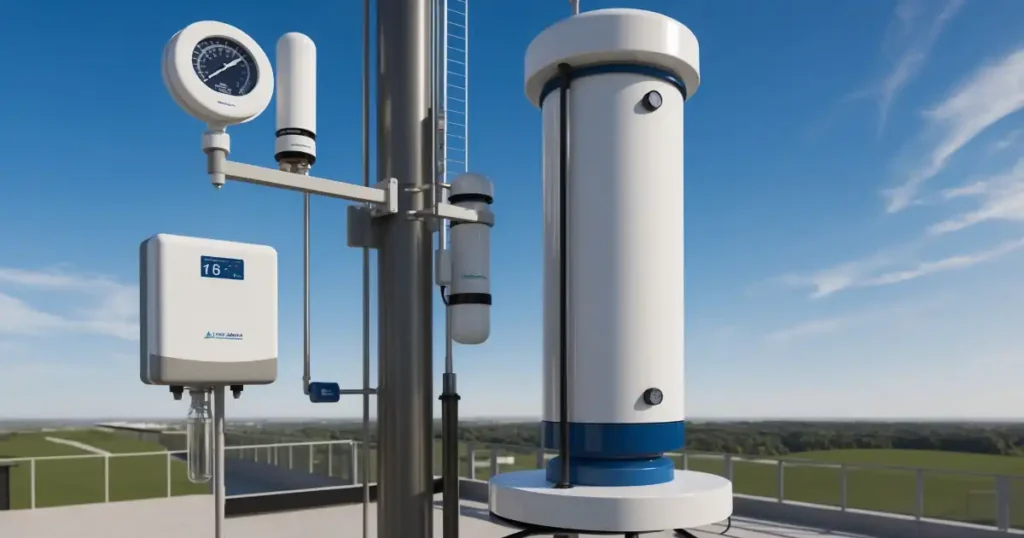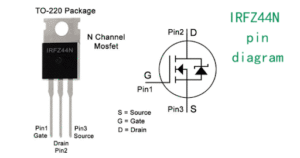Introduction
Weather stations or Meteorological stations play a crucial role in monitoring and understanding atmospheric conditions. By providing essential data on temperature, humidity, wind, and more, these stations are vital for various applications, from daily weather forecasts to climate research. This article delves into the definition, components, and evolution of weather stations, explores their different types and applications, and highlights the challenges and future trends in this field.
Definition of a Weather Station
What is a Weather Station?
A weather station is a setup designed to observe and record atmospheric conditions. It typically includes a variety of instruments that measure temperature, humidity, barometric pressure, wind speed and direction, rainfall, and solar radiation. This data is crucial for weather forecasting, climate studies, and numerous practical applications.
Importance and Applications of Weather Stations
Meteorological stations are indispensable for both everyday weather forecasts and long-term climate analysis. They provide data that helps meteorologists predict weather patterns, assist farmers in managing crops, support urban planners in designing resilient infrastructure, and contribute to disaster management efforts. Their role extends to research, helping scientists understand climate change and variability.
Historical Background
Evolution of Weather Monitoring Technology
The quest to understand and predict weather has been ongoing for centuries. Early weather observations were made with simple instruments like thermometers and barometers. Over time, technological advancements have introduced more sophisticated devices and automated systems, significantly enhancing the accuracy and scope of weather monitoring.
Milestones in Weather Station Development
Key milestones in the development of weather stations include Evangelista Torricelli’s invention of the first barometer in the 17th century, Leon Battista Alberti’s development of the anemometer in the 15th century, and the integration of digital technology in the late 20th century. These advancements have progressively improved our ability to measure and analyze atmospheric conditions.
Types of Weather Stations
Home Weather Stations
Features and Benefits
Home weather stations are designed for personal use, allowing individuals to monitor local weather conditions. They typically include instruments to measure temperature, humidity, and rainfall and may feature additional sensors for wind speed and solar radiation. These stations are beneficial for planning daily activities, gardening, and personal weather observation.
Popular Brands and Models
Several brands offer reliable home Meteorological stations, including Davis Instruments, Oregon Scientific, and AcuRite. These models vary in features, from basic setups with a few sensors to advanced systems with wireless connectivity and detailed reporting.
Professional Weather Stations
Advanced Features and Applications
Professional weather stations are used by meteorologists, researchers, and organizations requiring precise and comprehensive weather data. These stations feature advanced instruments capable of accurately measuring various atmospheric parameters. They are often part of larger networks contributing to regional or national weather forecasting.
Examples and Case Studies
Examples of professional weather stations include the National Weather Service’s network in the United States and the European Centre for Medium-Range Weather Forecasts (ECMWF). Case studies highlight their role in enhancing weather prediction accuracy and supporting research in climate science.
Automated Weather Stations
Definition and Functionality
Automated weather stations have sensors that continuously monitor atmospheric conditions without manual intervention. These stations are designed for remote operation and can transmit data to central databases for analysis. They are commonly used in scientific research, agriculture, and environmental monitoring.
Applications in Various Fields
Automated weather stations are utilized in diverse fields, including agricultural management for precision farming, environmental monitoring for tracking climate change, and disaster management for real-time weather data during emergencies.
Key Components of Weather Stations
Temperature Measurement
Types of Thermometers Used
Weather stations use various thermometers to measure air temperature, including mercury, alcohol, and digital thermometers. Digital thermometers with electronic sensors are highly accurate and commonly used in modern weather stations.
Accuracy and Calibration
Ensuring accurate temperature readings requires regular calibration of thermometers. Environmental factors and instrument wear can affect accuracy, so routine checks and adjustments are essential for reliable data.
Humidity Measurement
Hygrometers and Their Types
Hygrometers measure humidity levels in different types, including mechanical, electrical, and capacitive hygrometers. Capacitive hygrometers are popular in Meteorological stations due to their accuracy and durability.
Understanding Relative vs. Absolute Humidity
Relative humidity measures the amount of moisture in the air relative to the maximum amount it can hold at a given temperature. In contrast, absolute humidity refers to the total moisture content. Both measurements are important for understanding atmospheric conditions and predicting weather changes.
Barometric Pressure Measurement
Barometers: Analog vs. Digital
Barometers measure atmospheric pressure and can be analog or digital. Analog barometers use mercury or aneroid cells, while digital barometers employ electronic sensors. Digital barometers offer enhanced accuracy and are commonly used in modern weather stations.
Impact on Weather Forecasting
Barometric pressure is a critical parameter for weather forecasting, as changes in pressure can indicate upcoming weather patterns. Monitoring pressure trends helps meteorologists predict storms, high and low-pressure systems, and other weather phenomena.
Wind Speed and Direction
Anemometers and Wind Vanes
Anemometers measure wind speed, and wind vanes indicate wind direction. These instruments work together to provide a comprehensive understanding of wind conditions. Modern Meteorological stations often use electronic anemometers and wind vans for accurate, real-time data.
Data Interpretation and Usage
Wind speed and direction data are essential for weather forecasting, aviation, and marine navigation. Analyzing wind patterns helps predict weather changes and assess environmental conditions.
Rainfall Measurement
Rain Gauges: Standard vs. Tipping Bucket
Rain gauges measure precipitation and come in standard and tipping bucket types. Standard rain gauges collect and measure rainfall manually while tipping bucket gauges automatically record and report data. Accurate precipitation measurement is crucial for weather analysis and water resource management.
Importance of Accurate Precipitation Data
Accurate rainfall data is vital for understanding weather patterns, managing water resources, and supporting agricultural practices. It helps predict floods, droughts, and other weather-related events.
Solar Radiation Measurement
Pyranometers and Other Instruments
Pyranometers measure solar radiation, providing data on the amount of sunlight received. This information is essential for climate studies, energy planning, and agricultural management.
Role in Climate Studies
Solar radiation data contributes to understanding climate patterns, energy balance, and the effects of solar activity on weather. It is used in climate models to assess long-term trends and variability.
Data Collection and Analysis
Data Collection Methods
Manual vs. Automated Data Collection
Weather stations can collect data manually or automatically. Manual collection involves regular readings and recording by individuals, while automated systems continuously monitor and transmit data. Automated systems offer more frequent and consistent data collection.
Frequency and Intervals of Data Recording
Data recording frequency varies depending on the purpose of the weather station. Automated systems often record data at short intervals, such as every minute or hour, providing detailed insights into atmospheric conditions.
Data Analysis Techniques
Statistical Methods and Software Tools
Data analysis involves statistical methods and software tools to interpret weather data. Regression analysis, time series analysis, and machine learning algorithms help identify patterns and trends.
Interpreting Weather Data and Trends
Interpreting weather data requires understanding statistical outputs and relating them to weather phenomena. This analysis helps forecast weather, study climate change, and make informed decisions based on atmospheric conditions.
Integration with Other Systems
Data Sharing with Meteorological Services
Weather stations often share data with meteorological services to enhance forecasting accuracy and contribute to weather models. Integration with national and global networks improves the reliability of weather predictions.
Use in Climate Modeling and Research
Data from weather stations is used in climate modeling to simulate and predict climate changes. It helps researchers understand long-term trends and assess the impact of various factors on global climate.
Applications of Weather Stations
Agriculture
Impact on Crop Management and Yield Prediction
Meteorological stations provide crucial data for agricultural management, including temperature, humidity, and precipitation. This information helps farmers optimize crop production, manage irrigation, and predict yield.
Case Studies of Agricultural Weather Station Use
Case studies demonstrate the benefits of Meteorological stations in agriculture. For example, precision farming techniques use weather data to improve crop management and reduce resource wastage.
Urban Planning and Infrastructure
Role in City Planning and Environmental Monitoring
Meteorological stations play a significant role in urban planning by providing data on environmental conditions. This information helps design resilient infrastructure, manage urban heat islands, and improve air quality.
Examples of Urban Weather Station Applications
Urban weather stations monitor air quality, manage traffic, and support emergency services. Examples include smart city initiatives that integrate weather data into urban management systems.
Emergency Management and Disaster Response
Weather Stations in Forecasting and Disaster Preparedness
Weather stations are crucial for forecasting extreme weather events and preparing for disasters. Real-time data helps emergency responders make informed decisions and coordinate response efforts.
Historical Examples of Weather Station Impact During Emergencies
Historical examples highlight the importance of Meteorological stations in disaster management. Accurate weather forecasts, for instance, helped mitigate the impact of hurricanes and other severe weather events.
Climate Research
Contribution to Long-Term Climate Studies
Meteorological stations contribute to long-term climate studies by providing historical and current data. This data helps researchers track climate change, analyze trends, and assess the impact of human activities on the environment.
Use in Understanding Climate Change and Variability
Data from weather stations is essential for understanding climate change and variability. It helps scientists model future climate scenarios, study the effects of global warming, and develop strategies for mitigating climate impacts.
Challenges and Considerations
Accuracy and Calibration
Common Sources of Error
Meteorological station accuracy can be affected by various factors, including instrument malfunction, environmental conditions, and calibration errors. Regular maintenance and calibration are necessary to ensure reliable data.
Methods to Ensure Accuracy
Meteorological stations should be calibrated regularly, and instruments should be checked for proper functionality to ensure accuracy. Environmental factors, such as temperature and humidity, should be accounted for in data analysis.
Maintenance and Upkeep
Routine Maintenance Tasks
Routine maintenance tasks include cleaning instruments, checking calibration, and inspecting for damage. Regular upkeep ensures that Meteorological stations operate correctly and provide accurate data.
Troubleshooting Common Issues
Common issues with weather stations include sensor malfunctions, data transmission problems, and calibration errors. Troubleshooting involves identifying the problem, performing necessary repairs or adjustments, and ensuring proper operation.
Data Privacy and Security
Concerns Related to Data Sharing
Data privacy and security are important considerations when sharing weather data. Ensuring that data is protected from unauthorized access and misuse is crucial for maintaining trust and reliability.
Best Practices for Protecting Data
Best practices for protecting data include using secure data transmission methods, implementing access controls, and regularly auditing data security measures. These practices help safeguard sensitive information and ensure data integrity.
Future Trends and Innovations
Technological Advances
Emerging Technologies in Weather Monitoring
Advancements in technology are driving innovation in weather monitoring. Emerging technologies include advanced sensors, remote sensing techniques, and artificial intelligence and machine learning integration for improved data analysis.
Integration with IoT and Smart Technology
The integration of weather stations with the Internet of Things (IoT) and smart technology is enhancing their functionality. IoT-enabled Meteorological stations can provide real-time data, automate monitoring processes, and integrate with other smart systems for comprehensive environmental management.
Increasing Accessibility
Trends in Affordable and User-Friendly Weather Stations
The trend toward more affordable and user-friendly Meteorological stations makes atmospheric monitoring accessible to a broader audience. Advances in technology and reduced costs are enabling more people to monitor local weather conditions.
Expansion of Personal and Community Weather Stations
Personal and community Meteorological stations are becoming increasingly common, allowing individuals and organizations to contribute to local weather data collection. This expansion enhances community awareness and supports localized weather forecasting.
Conclusion
Summary of Key Points
Weather stations are essential for monitoring atmospheric conditions, providing data for weather forecasting, climate research, and various practical applications. They have evolved significantly, with technological advancements improving their accuracy and functionality.
The Future of Weather Stations
The future of Meteorological stations includes continued technological advancements, increased accessibility, and integration with smart systems. These developments will enhance our ability to monitor and understand atmospheric conditions, contributing to better weather forecasting and climate research.
Final Thoughts
Weather stations profoundly impact our daily lives, from planning activities to managing agricultural practices and preparing for disasters. As technology advances, weather stations will play an even more crucial role in understanding and responding to atmospheric changes, benefiting various industries and communities.
Frequently Asked Questions (FAQs)
What are the main components of a weather station?
A weather station typically includes instruments for measuring temperature, humidity, barometric pressure, wind speed and direction, rainfall, and solar radiation.
How do professional Meteorological stations differ from home models?
Professional Meteorological stations offer advanced features and higher accuracy, and they are often used by meteorologists and researchers. Home models are designed for personal use and ease of setup.
What is the role of automated weather stations?
Automated Meteorological stations operate without manual intervention, continuously monitoring and transmitting data. They are widely used in scientific research, agriculture, and environmental monitoring.
How can weather station data be used in agriculture?
Weather data helps farmers optimize crop management, manage irrigation, and predict yields by providing insights into temperature, humidity, and precipitation.
What challenges are associated with maintaining weather stations?
Challenges include ensuring accuracy through regular calibration, performing routine maintenance, and addressing issues like sensor malfunctions and data transmission problems.
What are the future trends in weather station technology?
Future trends include advancements in sensor technology, integration of IoT and smart systems, and increasing accessibility to affordable and user-friendly models.







